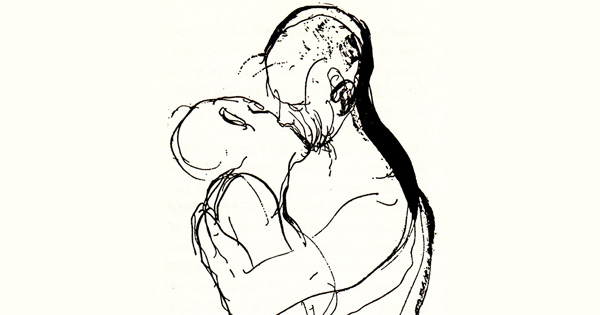Every time I see a sparrow at the airport, I feel tenderness towards the bird because I experience so acutely and specifically the paradox that haunts our human lives in various ways – the difficulty of distinguishing comfort from imprisonment, freedom from danger. It is a paradox rooted in early psychological development and most poignantly manifested in our intimate relationships, as we are constantly confronted with the boundary between where one ends and another begins, the challenge of balancing intimacy and independence.
Beneath the paradox pulsate two opposing forces – one pulling us towards the comfort of the known, the safety of the terminal, the other calling us to fly into the open skies of the unknown, with all its sunlit freedoms and storming dangers. In his 1976 book Fragments: Predictable crises of adult life (public Library), Gail Sheehy (November 27, 1936 – August 24, 2020) explores these “two sets of forces that are always at odds within us about how far and how fast we will grow,” calling them Own connection and Seeker of the Self.

She writes:
Our Connected Self… is the universal desire to attach to another, to somehow restore the beatific closeness to the mother, for in this connection would lie perfect harmony, absolute security, and infinite time. The Connected Self is born out of the frustration of our early discovery that we are indeed separate and different from our caregiver. This creates a desire for complete inclusion of the other, every “other” who becomes a source of love and pleasure… So the Connection Self, in its constant efforts to restore closeness, always desires a safe, tight fit.
The Seeker Self is driven by the opposite desire: to be separate, independent, to discover one’s possibilities and become the master of one’s own destiny. This impulse is fueled in early childhood by our joy at the awakening of possibility.
Yet for all its problematic affiliation, the Connected Self is also central to the “temporary fusions” on which empathy is based – the ability “to reach out to others and empathize with them, to feel what they may feel, without allowing our own self to interfere.” reality” – and on which all love is based; for all its apparent strength and independence, the Seeker Self can push us into selfishness and solipsism. Only by balancing these two elements can we achieve what Carl Jung called individuation, Abraham Maslow called self-actualization, and Sheehy simply called authenticity – “the achievement of that happy state of inner expansion in which we know all our possibilities and have ego strength.” direct your full range.” He considers necessary calibration to be the heart of the scale:
If we allow ourselves to indulge the Connection Self too soon, it can lead us to a position of no risk and no growth. But once we let go of suspicion or fear of losing our separateness in attachment to others, our connection side enables us to love intimately, share selflessly, express tenderness, and experience empathy.
If we leave the Seeker Self untamed, it will lead us to a self-centered existence in which there can be no room for true commitments and in which efforts to achieve individual distinction are so exhausting that they leave us emotionally impoverished.
Only through the joint cooperation of both parties can both individuality and reciprocity be finally achieved.

In the rest Passages (which I discovered through a side note in Middle Passage), Sheehy further explores how the balance of these two aspects of the psyche influences everything from romantic relationships to professional actualization at different stages of life as we dismantle our projections and complexes, let go of our compulsions and conditioning, and reclaim our authenticity. Observing that “the main task of people in midlife is to abandon all imaginary providers of security and stand naked in the world, which is an attempt to take full power over themselves,” he considers the ultimate payoff for this painful, redemptive process:
One of the greatest rewards of moving through a period of dismantling to renewal is ethical and moral self-acceptance and complete independence from other people’s standards and agendas. By giving up the desire for your parents to be different and moving through different lifestyles to a point of dignity worth defending, you can achieve… reaching that final stage of adult development where you can bless your own life.
Complete with Kahlil Gibran the challenge of balancing intimacy and independencethe key that Schopenhauer so movingly captured in his parable of the porcupine’s dilemmaand then visit Rilke again the difficult art of giving space in love.

